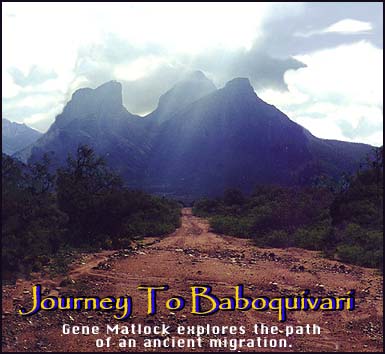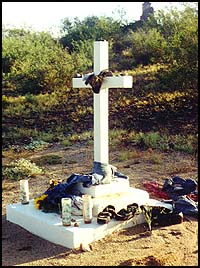|
|  |

Does it surprise you to find "People-Who-Came-Before"
in Southwestern United States and Northern Mexico?  Such human groups as "Phoenicians, Assyrians, Teutons, Jutes, Celts, Scythians, Chaldeans, Hittites, Kassites," plus many others, were not exactly who and what we've been told they were. The India-Indians can give mankind broader and more accurate descriptions of these principal actors on the stage of Ancient History. The Native-Americans are "Indians" after all! Such human groups as "Phoenicians, Assyrians, Teutons, Jutes, Celts, Scythians, Chaldeans, Hittites, Kassites," plus many others, were not exactly who and what we've been told they were. The India-Indians can give mankind broader and more accurate descriptions of these principal actors on the stage of Ancient History. The Native-Americans are "Indians" after all!
Skeptics often tell me that I'm just using a fertile imagination to link the Southwestern Native-Americans with certain ethnicities and communities in South Asia. Just in case any of my readers think I'm imagining all these correspondences, put yourself in my place. Pretend that you've read a book about ancient Tibet. In this book, you read about a little mountain village called Dina. The villagers practice their national Tibetan religion: Bon. Their shamans use sand-paintings to heal the sick. After that, you read a book about the Navajos. Their real name is Diney. Their religion is Bahanney. Their shamans use sand paintings to heal the sick. Intrigued, you start comparing other Native-American tribes with peoples living in India, consistently finding tight similarities. What would you then think - or know? Of course, these India-related correspondences are not confined only to Native-Americans. But the rest of the world's peoples is not what this article is all about.
| |
The spirit of I'Itoi, one of many Isas around the world, wanders within the bowels of Kheever or Quivari eternally, in a maze of tunnels running throughout the interior of Baboquivari. These tunnels may be shafts from which the ancient Hindus extracted unending quantities of gold, transporting it to India.
 Like I'Itoi's swastika (on left), this maze (right) is also a sacred O'Odham emblem.
It, too, stands at the altar of San Xavier Mission.
|
About Coronado's Ill-Fated Expedition
During my fact-finding mission to the O'Odham nation in September, 1999, a young O'Odham man told me that at the beginning of the Spanish conquest, a certain Spanish officer and his men tried to dig their way into Baboquivari. Suddenly, the ground under them opened; Baboquivari swallowed them. I intuited that he was giving me a mythologized version of Francisco de Coronado's search for the Seven Cities of Cibola and a place called Quivira, where, he was told, he could get his hands on unlimited quantities of gold.
Francisco Vasquez de Coronado (1510-1554) was the first explorer of America's Southwest. He arrived in Mexico in 1535, becoming governor of Nueva Galicia (the present states of Aguascalientes, Jalisco and Zacatecas). During his governorship he heard about the supposedly gold-rich Seven Cities of Cibola and Quivira, believed to be in what is now the American Southwest, somewhere in Arizona or New Mexico.
With 300 Spanish soldiers and some Native-Americans, he marched to the present state of Arizona. The news about the Spaniards' obsession for gold surely reached the O'Odham nation long before he did.
Esteban, also called El Turco, led the Spaniards away from Baboquivari, to what is now the Lindsborg, Kansas area. Coronado began to suspect that he had been tricked. Another Indian accompanying the expedition could have grown fearful that El Turco might be persuaded to lead the Spaniards back to Arizona. He begged Coronado to quit paying attention to El Turco, promising to lead the Spaniards farther northward, to the real "Quivira," but Coronado had lost his fascination with fairy tales. He had El Turco strangled to death, returning to Mexico in disgrace in 1542. It never occurred to Coronado to remove "Babo" from "Quivari."
|
|
<--BACK-- || Viewzone
|  | 
|



 Such human groups as "Phoenicians, Assyrians, Teutons, Jutes, Celts, Scythians, Chaldeans, Hittites, Kassites," plus many others, were not exactly who and what we've been told they were. The India-Indians can give mankind broader and more accurate descriptions of these principal actors on the stage of Ancient History. The Native-Americans are "Indians" after all!
Such human groups as "Phoenicians, Assyrians, Teutons, Jutes, Celts, Scythians, Chaldeans, Hittites, Kassites," plus many others, were not exactly who and what we've been told they were. The India-Indians can give mankind broader and more accurate descriptions of these principal actors on the stage of Ancient History. The Native-Americans are "Indians" after all!